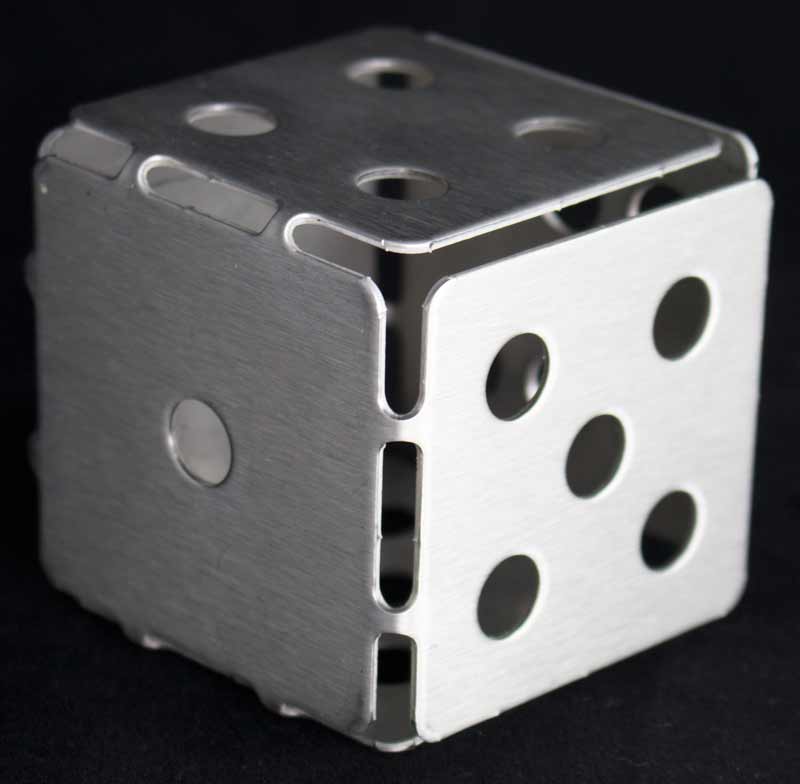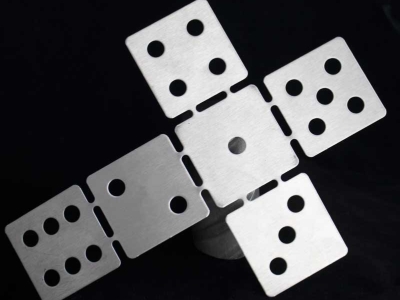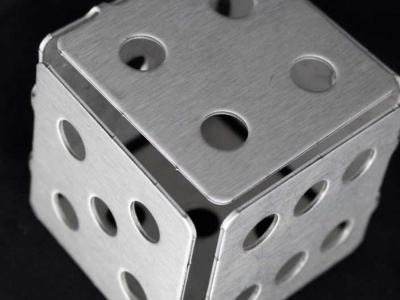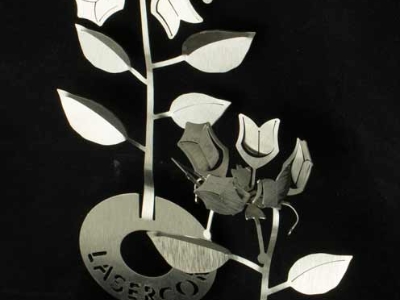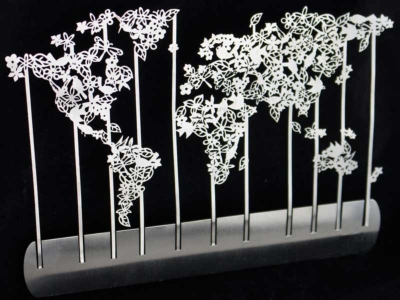Stainless steel bending
Bending is a process where stainless steel sheet is placed and formed on the mould using the press brake or bending machine.
This process is generally used to form long and narrow pieces which do not adapt into tooling press and for short series to do it via rollers.
“V” bent is typical for this kind of operations, though bending machines can also be used to cut, drill, shear, straighten or flatten, etc.
The internal part of the material suffers compression when bending, while the external part suffers traction establishing a gradation of tensions of both types going through a null value according to the neutral line. The bending angle depends on the parameter of the machine, while the opening of the mould affects the necessary strength to do the bending. The minimum width is determined by the sheet thickness and sometimes by the punch radius.
Bending can be a cold or a hot process and it can be made to any kind of alloy, though high carbon steels and Titanium alloys are more difficult to form. The process can be carried by press stamping or roll forming depending on the series to be manufactured.
Sheet bending
- The limits of the forming are determined by the formability of the material and this depends on its nature (composition), state (microstructure-treatment), thickness and anisotropy.
- The bigger the bending angle, the bigger is the minimum radius. The minimum radius depends on the type of material, its treatment, bending, length and orientation angle in relation to the rolling direction and cut conditions of the edge perpendicular to the bending line.
- Low hardness and high ductility materials can be bent until 180º with very small radius, without wrinkles or fissures.
- Air quenching or work hardened steels, the cut edge must be free of burrs to avoid fissures while bending.
- The sheet thickness also limits the bending radius, for the same material and same condition.
- The material ductility highly affects the value of the possible minimum radius.
- Annealed austenitic stainless steel can be bent 180º, radius 0.5 x e, and requires 50-60% more power than low carbon steels. The material springback after the application of the load is significantly higher and must be considered when bending. 60ºC heating will reduce the necessary power for bending.
- The behaviour of stainless steels with chromium content when bending will vary depending on the grade. Low carbon and 12-17% chromium steels bend easily as the austenitic steels do but they will need more power than low carbon steels. High chromium and low carbon content grades bend easily when 170-210ºC heated. Martensitic stainless steels (high carbon) are not suitable for bending even if they are annealed.
- The stainless steel springback depends on its strength, angle and radius of bending. Ferritic stainless steels show less springback than austenitic ones in similar conditions because those are less work hardening. Springback can be controlled reducing the punch radius, pressing the sheet against the mould and/or bending at first using a minor angle that will make up for later springback.
Source: Stainless steeel forming (Cedinox)
Author: Manuel Fernández (Phd Industrial Engineer)
